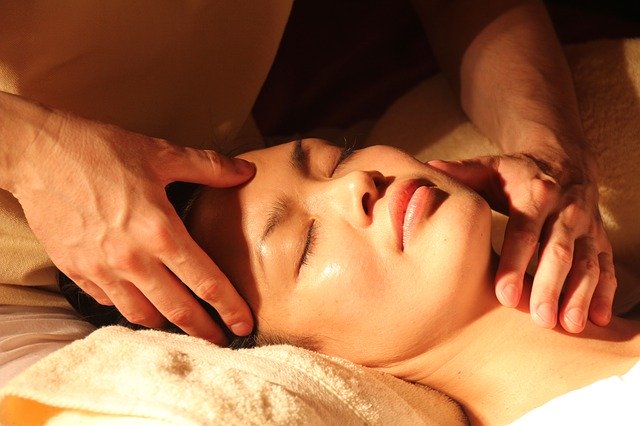
You want your skin to look healthy and beautiful regardless of your age. While topical treatments, such as moisturizers, play a vital role in protecting and repairing skin, they’re not the only skin care solution available.
Improving the look of your skin also involves treating issues below its surface, targeting anything that might potentially interfere with the formation of soft, supple skin cells. A lymphatic facial is such a method. Previously used in massage therapy to treat a condition called lymphedema, these specialty facials have become a popular beauty treatment.
Do Lymphatic Drainage Facials – sometimes called nonsurgical facelifts – help improve the appearance of your skin? Here’s a closer look at their benefits and limitations:
The Lymphatic System Explained
To understand lymphatic drainage treatments, let’s first take a look at the body’s lymphatic system. Part of the immune system, the lymphatic system helps protect your body against disease, infection, and other maladies.
As detailed in this Mayo Clinic illustration, the lymphatic system includes your spleen, thymus, tonsils, bone marrow, and, of course, your lymph nodes. These small, kidney-shaped organs filter foreign entities, remove waste, and carry white blood cells. You have hundreds of lymph nodes in your body; they’re linked by a network of lymphatic vessels.
If your lymphatic system is working as intended, your lymph nodes will continually drain lymph into the bloodstream. However, if the lymphatic system becomes blocked, typically due to injury or disease, lymph can’t drain properly – and that’s where lymphatic massage can help.
An Overview of Lymphatic Massage
Lymphatic drainage massage is a type of specialized, targeted massage. As explained by research published by the University of Arizona, the massage helps remove excess fluid, which can occur in the skin, muscles, and other areas.
This fluid build-up is called lymphedema. Any injury or illness that results in damage or removal of any lymph nodes can potentially cause swelling, with cancer treatment as the most common reason. If fluid can’t drain, your limbs, neck, genitals, or other areas of the body will likely swell. Even minor swelling can impair movement, cause discomfort, and increase the likelihood of other health problems.
Does Lymphatic Massage Have Medical Benefits?
Absolutely! Research published by the US National Library of Medicine, among other sources, shows clear benefits of lymphatic drainage massage in the treatment of breast cancer. It helps the damaged lymph nodes effectively clear away toxins, bacteria, viruses, and more.
According to the Leukemia and Lymphoma Society, lymphatic massage is also an effective passive treatment. It not only helps reduce fluid built-up and subsequent swelling, but it’s what’s called a complementary therapy that helps relax and comfort those suffering from cancer and other lymphatic problems.
Finally, lymphatic massage helps with a variety of non-life-threatening issues, too. For instance, clinical research shows this type of targeted massage can reduce pain and facial swelling for patients following wisdom tooth extraction. It’s also shown promise in treating acne, eczema, and digestive issues.
How is the Massage Performed?
Lymphatic drainage for medical purposes is usually performed by physical therapists or similar types of individuals with specific medical training. Unfortunately, you’re unlikely to find a medical professional who is willing to give you a lymphatic drainage facial for aesthetic reasons.
However, some aestheticians undergo special training related to the lymphatic system. While the training is typically not as thorough as what a medical professional receives, you’re still better off seeking an aesthetician with that type of training than without.
A drainage massage typically involves light pressure and gentle pushing. The person giving the massage stretches the skin in specific directions using their palms and fingers. Soft brushing movements are typically a part of cosmetic massages (but not medical ones).
When used as a medical treatment, the massage typically lasts about an hour. However, a lymphatic drainage facial is typically shorter, usually lasting about 30 to 45 minutes.
The Potential Cosmetic Benefits of Lymphatic Drainage Massage
As a therapy, lymphatic massage produces clinically-proven results. But what about its effectiveness as a beauty treatment?
Most aesthetic-based lymphatic massage focuses on improving facial skin. Beauty experts and others claim it reduces the appearance of fine lines, wrinkles, and bags under the eyes. However, research supporting these claims is sparse.
A study from Osaka University found that damaged lymphatic vessels can result in the appearance of sagging skin. However, it’s important to note that a Japanese beauty company was heavily involved in this research, and touts the study frequently in their marketing and advertising.
The Bottom Line
Should you use a drainage facial to improve the look of your skin? So far, the reduction of lines and wrinkles isn’t supported by any significant clinical research. If you’re interested in drainage massage as a type of non-invasive facelift, make sure you have realistic expectations.
Fortunately, when performed by a trained aesthetician, it’s unlikely to cause any serious damage. Many people find it’s a relaxing component to a larger skin care regimen that includes washing, moisturizing, and an overall healthy lifestyle.
Toby is a staff writer at fivestarskincare.co where he blogs all about the world of skin care, health & beauty.



